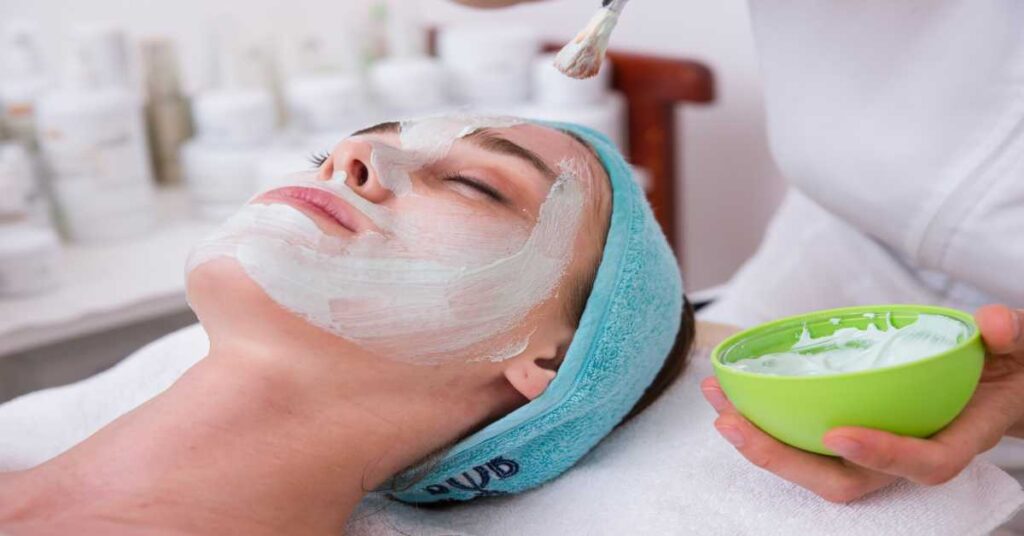Top 10 Homedies For Oily Skin
In daily life, both men and women frequently struggle with oily skin. Oily skin has a glossy or greasy appearance. Oily skin is a result of a sebaceous gland producing too much sebum. These glands are found below the surface of the skin.
There are several benefits and drawbacks to this sebum. It is the skin’s defense mechanism and has antioxidant and antibacterial properties. However, excessive sebum can clog skin pores, make skin oilier, and feed bacteria that cause acne on the skin’s surface. Sebum is a fatty, greasy material. Sebum is okay because it keeps your hair healthy and lustrous and protects and moisturizes your skin.
But too much sebum can make skin oily, which can lead to blocked pores and acne. Sebum production may be increased by stress, hormonal changes, and inheritance.
Acne and oily skin are difficult to control. Even so, using natural therapies frequently relieves problems without needing prescription medications or pricey skin care programs.
What Causes Oily Skin?
The sebaceous glands enlarge and begin producing too much sebum, which makes the skin greasy and oily. People’s levels of skin oiliness might vary depending on their age, environment, race, and gender.
Genetics: Typically, oily skin runs in families. Your skin is quite likely to be oily if one or both of your parents have a history of oily skin.
Age: Young adults and adolescents have oilier skin than the elder population. Even if your skin won’t get entirely oil-free as you age, it will unquestionably grow less oily. Additionally, oily skin might actually slow down the aging process of your skin since it keeps the skin moisturized longer than dry skin does.
Pore Enlargement: Aging, acne flare-ups, and weight changes can all lead to pore enlargement on your skin. Your skin may produce more oil when your pores are larger.
Climate: Your skin is likely to create more oil if the climate where you live is hot and humid. This explains why your skin is more oily in the summer than it is in the winter.
Symptoms of Oily Skin
- Shine on the face
- large pores on the face’s skin
- Skin that appears thick or rough
- Occasional or persistently occurring pimples
- Clogged pores
- Blackheads and whiteheads
How to get rid of Oily Skin?
Several natural treatments can be used to remove the extra oil, leaving your skin glowing and healthy.
Here are some home treatments for oily skin:
1. Wash your face
Many people with oily skin don’t wash their faces every day, despite the fact that it can seem obvious. If you have oily skin, you should wash your face twice daily, but don’t overdo it. Avoid using strong detergents or soaps. Use gentle soap instead, such as glycerin soap.
2. Blotting Papers
To decrease shiny, oily skin, use these tiny, thin papers to blot excess oil from your face. However, they won’t prevent your sebaceous glands from operating nonstop. Blotting papers are readily accessible and reasonably priced.
Blotting paper can be used to absorb oil by gently pressing it against the skin’s surface. Try not to massage the paper all over your face; otherwise, the oil will get all over. Use as required all day long.
3. Honey
One of nature’s most popular skincare ingredients is honey. Oily, acne-prone skin may benefit from the substance’s antibacterial and antiseptic effects.
Honey is a natural humectant that keeps skin hydrated without making it oily. Skin moisture is removed by humectants without being replaced.
- Put a thin layer of raw honey, if possible, on your face.
- Give it fifteen to twenty minutes or so to dry.
- Wash it off completely with warm water.
4. Cosmetic Clay
Cosmetic clays, commonly referred to as healing clays, are applied topically to the skin to absorb oil and treat a number of skin conditions. French green clay is a popular treatment for acne and greasy skin because it is extremely absorbent. French green clay is available as a powder as well.
How to use it?
- To make pudding-like clay, combine a teaspoon of clay with filtered water or rose water.
- Apply the clay mixture to your face and let it there until it dries.
- Remove the clay with warm water, and then pat it dry.
- Peel-off masks are more abrasive to the skin than water-soluble clay masks.
5. Multani Mitti
For oily skin, Multani Mitti, also known as fuller’s earth, is ideal. It functions as an absorbent, soaking up all the oil and debris and leaving behind fresh, radiant skin. Multani Mitti can be used to create a variety of face packs.
Use Multani Mitti, turmeric, saffron, sandalwood powder, and gramme flour to create a herbal face pack. When the mixture resembles a paste, add water and combine the components. Apply this face mask next to eliminate greasy skin.
6. Oatmeal
Oatmeal absorbs extra oil and soothes irritated skin. It also helps exfoliate dead skin. Otmeal is common practice to smash oats before using them in face masks.
It can be flavored with yogurt, honey, or mashed fruit like bananas, apples, or papaya.
Applying oatmeal to the face. To make a paste, mix 1 cup of ground oats with hot water. Add 1 tablespoon of honey and stir.
Massage the oatmeal mixture into your face for three minutes, then rinse with warm water and pat yourself dry.
The oatmeal mixture can also be applied to your face and left on for 10 to 15 minutes before being rinsed off and patted dry.
7. Almonds
Grounded almonds absorb extra oil and impurities in addition to helping the skin exfoliate.
How to use it?
- 3 teaspoons of finely ground almonds should be used.
- Incorporate 2 teaspoons of raw honey.
- Gently rub circular strokes on your face.
- Rinse it off.
The almonds can also be ground into a paste and then combined with honey to create an almond face mask. After fifteen minutes, rinse it off.
8. Eggwhite and lemon
Traditional remedies for oily skin frequently contain egg whites and lemons. According to theories, both substances constrict pores. The acid found in lemons and other citrus fruits may help the oil absorb. According to the study, lemons contain antimicrobial properties as well. This treatment is not an effective alternative for people who are allergic to eggs.
How to use it?
- Take one egg white and one teaspoon of freshly squeezed lemon juice and mix it properly.
- Apply it to your face then leave it until the mask dries.
- Rinse it with warm water.
9. Aloe Vera
Aloe vera possesses qualities that are antibacterial, anti-inflammatory, and wound healing. It is a wonderful soother for all types of skin and is not just for sunburns. It promotes skin healing in general and treats breakouts. Aloe can therefore soothe your face if it is inflamed due to an oily/too dry/oily cycle.
How to use it?
Apply aloe to your skin and massage it before bed. Leave it on all night. As usual, wash off in the morning. It’s a natural, inexpensive treatment choice with a pleasant cooling effect for a bedtime ritual.
10. Tomatoes
Tomatoes are an excellent source of skin-beneficial B vitamins, antioxidants, and enzymes. Although it might seem strange to slice a tomato and massage it on your face, those with oily skin could find it to be a terrific suggestion.
The vitamins and antioxidants in tomatoes help lower inflammation and the indications of aging, while the enzymes in tomatoes gently remove dead skin cells.
There is salicylic acid in tomatoes. Tomato acids may aid in clearing clogged pores and removing extra skin oil.
How to use it?
The pulp from one tomato should be combined with one teaspoon of sugar. Apply it on the skin. After putting on the mask, wait for five minutes. Pat yourself dry after a thorough rinse in warm water.
Additional Tips
- Making dietary modifications, such as avoiding fried foods and trans fats.
- washing the face twice a day with warm water and water-based products.
- Consume a healthy, balanced diet full of whole foods.
- Keep moisturized, refrain from touching the face all day, use a moisturizer every day, and avoid sleeping in makeup.




